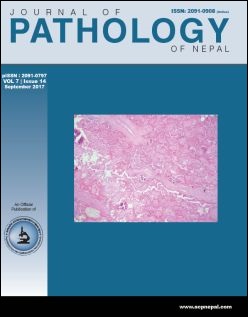Cutaneous leishmaniasis
DOI:
https://doi.org/10.3126/jpn.v7i2.18031Keywords:
Granulomatous, Kala-azar, Papulo-nodular, SkinAbstract
ABSTRACT
Leishmaniasis is considered to be zoonotic disease, caused by a protozoan parasite of the genus Leishmania, and transmitted by a bite of infected female sandfly. Primary cutaneous leishmaniasis is not common disease in Nepal, however, there were cases reported from Terai region of Nepal. The patients with cutaneous leishmaniasis present with a papule or nodule at the site of inoculation, followed by formation of crusts. Differential diagnoses of cutaneous leishmaniasis include variety of skin diseases, inflammatory like impetigo, eczema, or granulomatous like sarcoidosis, lupus vulgaris, to skin tumor like basal cell carcinoma & squamous cell carcinoma. There are various procedures and laboratory techniques used to diagnose leishmaniasis. Punch skin biopsy is widely used & popular technique to diagnose cutaneous leishmaniasis. Different drugs like sodium stibogluconate, sodium antimony gluconate, Amphotericin B and Miltefosine: are used for its treatment. No vaccines are available for prevention.
Downloads
Downloads
Published
How to Cite
Issue
Section
License
This license enables reusers to distribute, remix, adapt, and build upon the material in any medium or format, so long as attribution is given to the creator. The license allows for commercial use.




